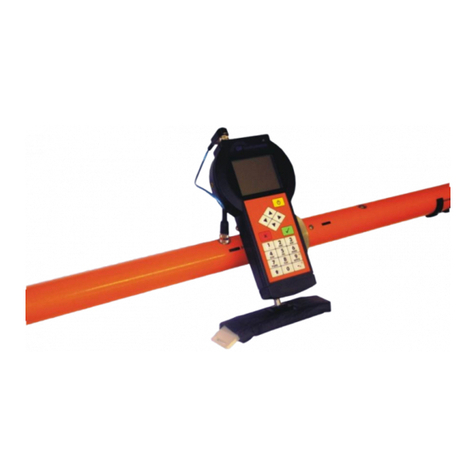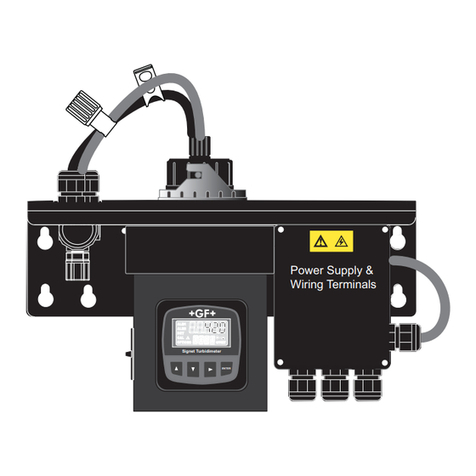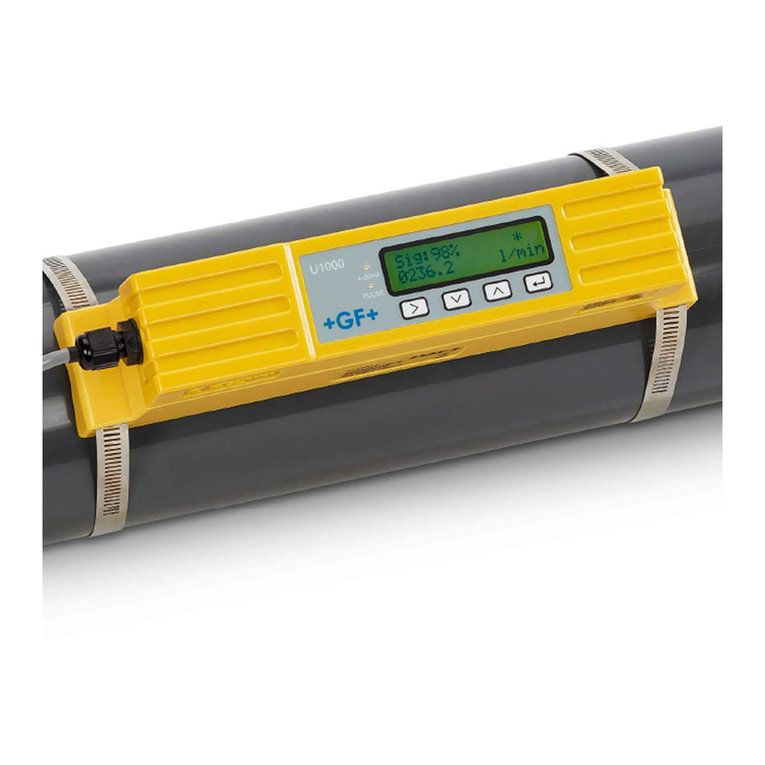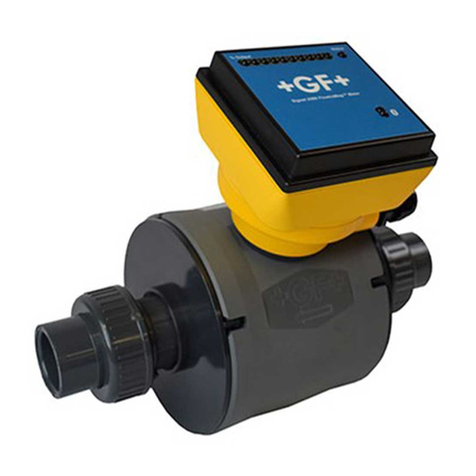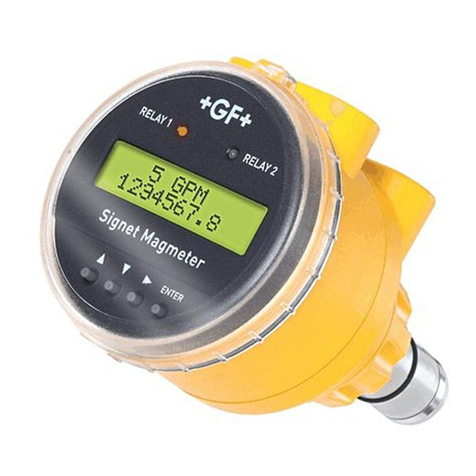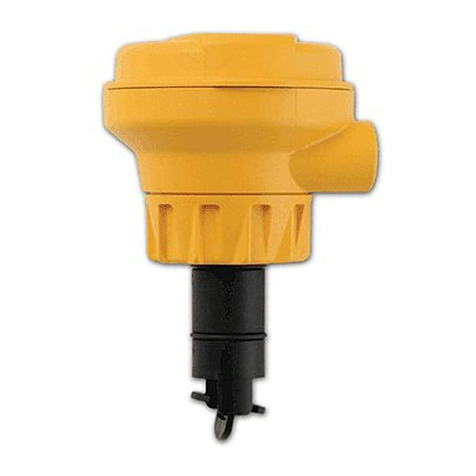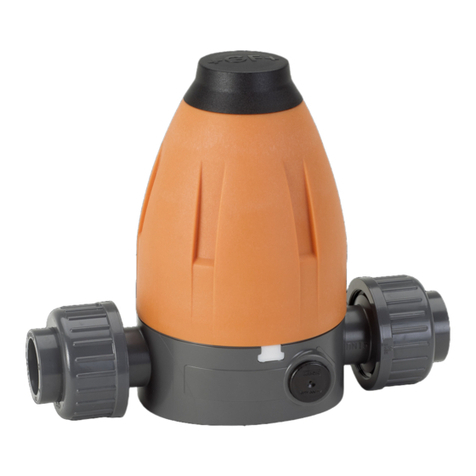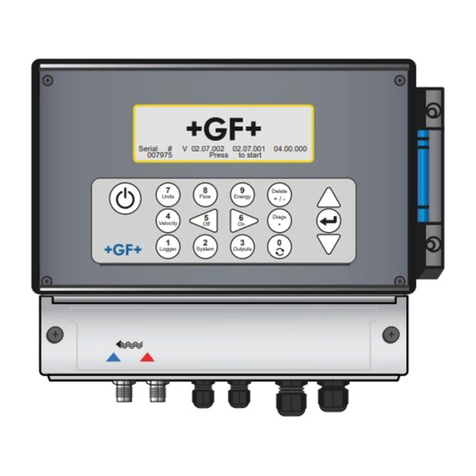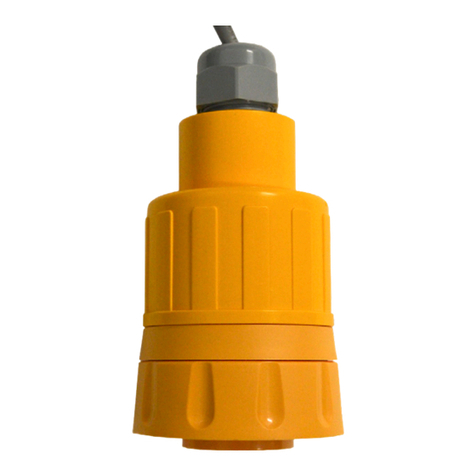
2GF 263X Series Chlorine Electrodes
Dimensions
Warranty Information
Safety Information
Refer to your local Georg Fischer Sales office for the most
current warranty statement.
All warranty and non-warranty repairs being returned must
include a fully completed Service Form and goods must be
returned to your local GF Sales office or distributor.
Product returned without a Service Form may not be
warranty replaced or repaired.
GF products with limited shelf-life (e.g. pH, ORP, chlorine
electrodes, calibration solutions; e.g. pH buffers, turbidity
standards or other solutions) are warranted out of box but not
warranted against any damage, due to process or application
failures (e.g. high temperature,
chemical poisoning, dry-out)
or mishandling (e.g. broken glass,
damaged membrane,
freezing and/or extreme temperatures).
Caution / Warning / Danger
Indicates a potential hazard. Failure to follow all warnings
may lead to equipment damage, injury, or death.
Electrocution Danger
Alerts user to risk of
potential of injury or death via
electrocution.
Electrostatic Discharge (ESD)
Alerts user to risk of potential damage to product by ESD.
Personal Protective Equipment (PPE)
Always utilize the most appropriate PPE during
installation and service of GF products.
Pressurized System Warning
Sensor may be under pressure, take caution to vent
system prior to installation or removal. Failure to do so
may result in equipment damage and/or serious injury.
Hand Tighten Only
Overtightening may permanently damage product threads
and lead to failure of the retaining nut.
Do Not Use Tools
Use of tool(s) may damage product beyond repair and
potentially void product warranty.
Note / Technical Notes
Highlights additional information or detailed procedure.
DO NOT
FREEZE
Do Not Freeze
Products are temperature sensitive and may contain
freezable liquids. Freezing damage to pH, ORP, and
Chlorine electrodes voids product warranty.
74.4 mm (2.93 in.)
25.15 mm (.99 in.)
109.2 mm (4.3 in.)
26.4 mm (1.04 in.)
Description ............................................................................... 1
Warranty Information................................................................ 2
Safety Information .................................................................... 2
Dimensions .............................................................................. 2
Specifications ........................................................................... 3
Sensor Preparation .................................................................. 4
Operation ................................................................................. 5
Calibration ................................................................................ 5
Maintenance............................................................................. 6
Storage .................................................................................... 7
Reconditioning ......................................................................... 8
Installation ................................................................................ 9
Mounting Position .................................................................... 9
Overview ................................................................................ 10
Troubleshooting ......................................................................11
Ordering Information .............................................................. 12
Table of Contents














